dental hygiene
Regular dental hygiene
sessions can help you...
frequently asked questions
A dental hygienist is a skilled dental professional that can provide preventative treatment and advice to help reduce the risk of significant dental and health issues.
A dental hygienist can carry out a periodontal examination, charting and use indices to screen and monitor gum disease. They can diagnose gum disease and plan treatment to deliver care.
A dental hygienist can provide professional teeth and implant cleaning to treat gum disease and prevent further progression using manual and powered instruments.
A dental hygienist can also offer professional tooth whitening to lighten and whiten the natural shade of your teeth.
Gum disease is a common condition. 90% of the population have had gum disease at some point in their lives. One major problem with gum disease is that it can be painless and many people are unaware of having it.
The early stage of gum disease is called gingivitis. This is reversible through thorough plaque removal. If treatment is not received, a more serious and advanced stage of gum disease may follow called periodontitis. This causes tissue destruction and irreversible bone loss around the teeth. If left untreated it can lead to tooth mobility and early tooth loss.
Gum disease can be identified by sore, swollen, or infected gums. You may experience bleeding or painful gums when eating or when brushing your teeth.
If diagnosed early, it can be treated and reversed. This is why it is important to keep up with regular appointments with your dentist and hygienist.
Dental plaque is a soft but sticky film that coats the teeth. It contains bacteria that are responsible for causing gum disease and decay when sugar is consumed. It requires mechanical plaque control via friction from the bristles on your toothbrush to remove it. Unfortunately, it quickly starts to rebuild again even shortly after cleaning. This is why we must brush our teeth regularly and thoroughly.
If brushing is poor and plaque is missed it can calcify and turn into calculus.
Calculus is a hard substance adhered to the surfaces of your teeth. Your toothbrush cannot remove it. Plaque will adhere to calculus allowing it to build up into heavier deposits. This build-up will contribute to the progression of gum disease.
Your dental hygienist can carry out thorough debridement to remove plaque, calculus and staining. Your hygienist will also advise on how to maintain good oral hygiene at home to reduce and prevent plaque and calculus accumulation.
Most of the time a dental hygiene appointment is relatively painless. The techniques used to clean your teeth are gentle on your teeth and gums, yet the process is very effective at getting your teeth clean.
A topical anaesthetic cream can applied to the gums prior to the procedure to ensure no discomfort. Some areas can be slightly sensitive. For tooth sensitivity a toothpaste can be applied. If a more profound numbness is required, local anaesthetic can be administered.
If you do feel any pain or discomfort, it’s important to let your dental hygienist know.
The price of treatment can vary depending on the number and type of appointments required. An initial hygiene consultation is advised, which costs £80. Patients with more significant gum disease will need more extensive treatment. Appointments can vary from 30 minutes to 2 hours. An individual treatment plan will be arranged for you with a proposed estimate.
The time depends on the treatment required. Patients with more significant gum disease will need more extensive treatment. Appointments can vary from 30 minutes to 2 hours.
Yes, you can visit the dental hygienist during pregnancy. Care must be taken with patient positioning during the later stages of pregnancy. It’s important to maintain good oral hygiene during pregnancy as inflammation can increase due to hormonal changes.
Yes, children are welcome to visit the dental hygienist from as young as 5 years old. Remember prevention is key. It’s important to develop good oral hygiene and healthy diet habits from a young age to prevent problems later in life.
A consultation is necessary to discuss the treatment procedure and aftercare in more detail. Your concerns can be discussed and an individual treatment plan can be arranged for you. Patients with more significant gum disease will need more extensive treatment.
It’s normal for your gums to feel tender and teeth to feel slightly sensitive after a hygienist appointment. If it feels particularly uncomfortable you can take something as you would for a headache, for example paracetamol.
If you have had any local anaesthetic administered it will take approximately 1-2 hours to wear off. During this time it’s important to take care not to bite your lips, cheeks or tongue. It’s also important to avoid burning yourself with any hot food or drinks.
Usually, you would be fine to return to work following your hygienist appointment. If you were due to have a meeting or give a presentation you would need to wait for the local anaesthetic to wear off.
In some cases, for treating more advanced stages of gum disease, you may be advised to attend two appointments on the same day. This involves doing one half in the morning and the other half in the afternoon. You would need to plan your work commitments accordingly.
It is likely to be slightly uncomfortable, usually on the day of the session, especially if you have had extensive treatment.
Teeth can feel more on edge and sensitive to the cold. It’s advised to use a toothpaste for sensitivity such as Colgate Sensitive Instant Relief Toothpaste. It’s important to remember not to rinse your toothpaste away after brushing. You can also apply some toothpaste on your finger during the day on specific areas.
If your gums feel uncomfortable you can take something as you would for a headache. For example, paracetamol.
You should be fine to drive home following your dental hygiene appointment. If you had extensive cleaning carried out and you know you are a nervous patient, you could have someone available to drive you home as a safety precaution.
Excellent oral hygiene and meticulous plaque control is important leading up to appointments as well as post treatment.
This involves investing your time in removing plaque thoroughly. We need to stop the progression of gum disease and encourage successful results following treatment.
Cleaning between teeth daily is a must. This is advised twice a day for patients with advanced stages of gum disease. This can be achieved via flossing, using interdental brushes and/or water flossing. An electric toothbrush is far more effective at plaque removal over a manual toothbrush. Brushing should be at least 2 minutes, twice a day. Another point to remember is to use a fluoride toothpaste and not to rinse it after brushing – spit only!
We can advise you about an individually tailored home care plan.
clinics
Cambridge Plasma skin tightening treatments are available at:
Waterlilies Skin Clinic
& Beauty
Clinics: first Monday of the month. Parking/other info: Free parking is available outside the clinic and there is ground floor access.
2D Dolphin Way,
Off London Road,
Stapleford,
Cambridge,
CB22 5DW
Utopia Hair Bar
Clinics: first Thursday of the month Parking/other info: Free parking is available outside the clinic on the High Street and there is ground floor access.
115A High Street, Brampton, Huntingdon, PE28 4RA
Qi Spa
Clinics: second Thursday of the month. Parking/other info: Parking is available in the David Lloyd Gym Car park. First floor clinic with lift access..
David Lloyd Cambridge,
Coldham’s Business Park,
Coldhams lane,
Cambridge,
CB1 3LH
Glo Cosmetic Aesthetics
Clinics: third Thursday of the month. Parking/other info: Paid parking is available near to the clinic in the Waitrose car park. Ground floor access.
5 Cross Keys Mews,
St Neots,
PE19 2AR
English Rose, Beauty House
Clinics: third Friday and third Sunday of the month. Parking/other info: Free parking available outside the clinic. Ground floor access.
16 Berrycroft,
Willingham,
Cambridge,
CB24 5JX
The Retreats Beauty & Wellness Salon
Clinics: fourth Thursday of the month. Parking/other info: Free parking 500 yards from the clinic, disabled parking in the courtyard outside the clinic. Treatment rooms are on the first floor with a chair lift accessible. No under 18s please.
Burwash Manor,
New Road,
Barton,
Cambridge,
CB23 7EY
Antwerp House Dentistry
Dental Hygiene appointments available: Monday, Tuesday and Wednesday. Parking/other info: Free parking behind the dental practice and ground floor access.
Antwerp House,
36 Brookfields,
Cambridge
CB1 3NW









